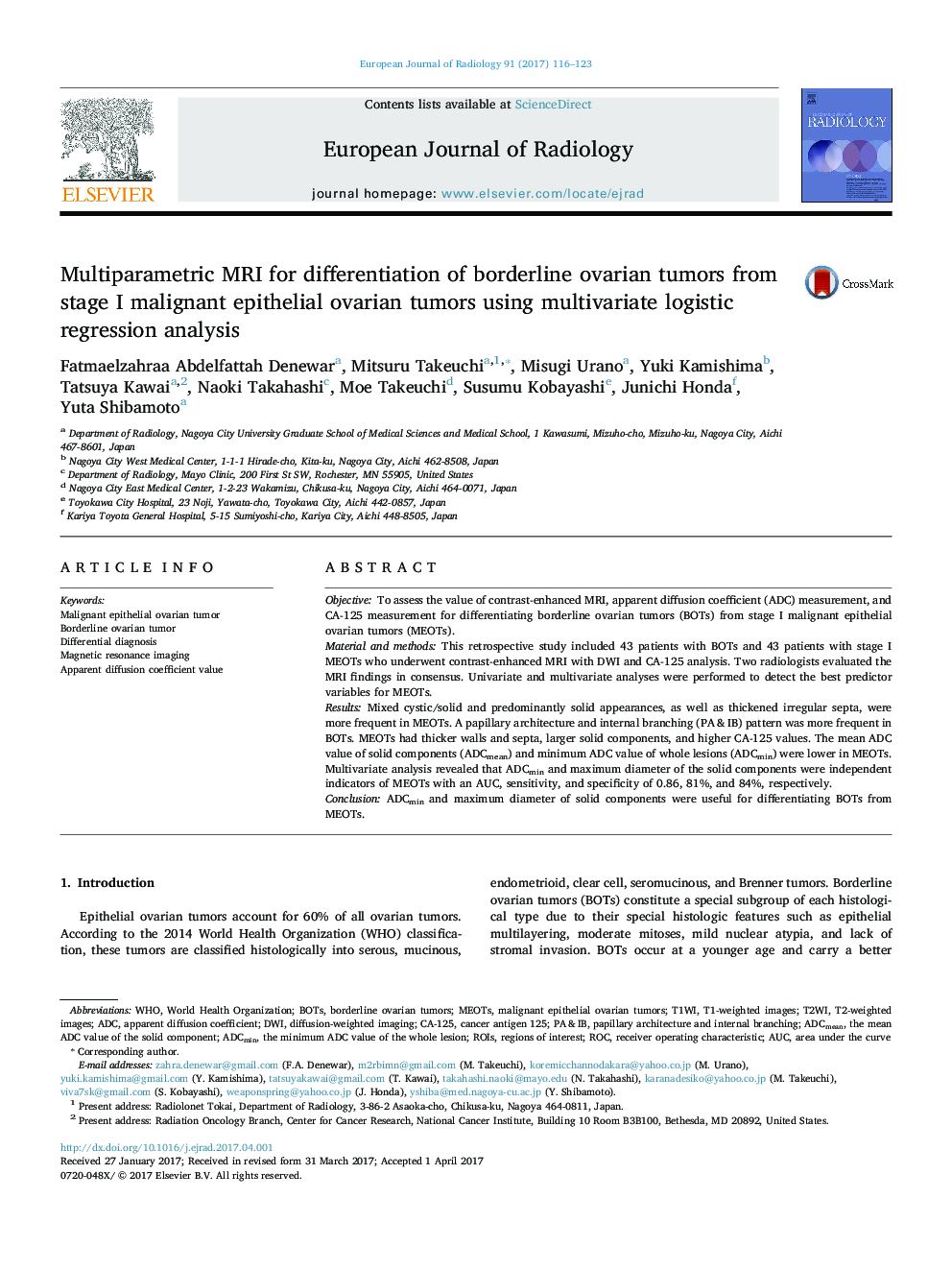| Article ID | Journal | Published Year | Pages | File Type |
|---|---|---|---|---|
| 5726312 | European Journal of Radiology | 2017 | 8 Pages |
â¢ADCmin and maximum diameter of solid component are significant on multivariate analysis.â¢PA&IB are more commonly observed in BOT.â¢Mixed solid/cystic appearance and thickened irregular septa are more frequent in MEOT.â¢Solid components are more frequent and larger in MEOT.
ObjectiveTo assess the value of contrast-enhanced MRI, apparent diffusion coefficient (ADC) measurement, and CA-125 measurement for differentiating borderline ovarian tumors (BOTs) from stage I malignant epithelial ovarian tumors (MEOTs).Material and methodsThis retrospective study included 43 patients with BOTs and 43 patients with stage I MEOTs who underwent contrast-enhanced MRI with DWI and CA-125 analysis. Two radiologists evaluated the MRI findings in consensus. Univariate and multivariate analyses were performed to detect the best predictor variables for MEOTs.ResultsMixed cystic/solid and predominantly solid appearances, as well as thickened irregular septa, were more frequent in MEOTs. A papillary architecture and internal branching (PA&IB) pattern was more frequent in BOTs. MEOTs had thicker walls and septa, larger solid components, and higher CA-125 values. The mean ADC value of solid components (ADCmean) and minimum ADC value of whole lesions (ADCmin) were lower in MEOTs. Multivariate analysis revealed that ADCmin and maximum diameter of the solid components were independent indicators of MEOTs with an AUC, sensitivity, and specificity of 0.86, 81%, and 84%, respectively.ConclusionADCmin and maximum diameter of solid components were useful for differentiating BOTs from MEOTs.
